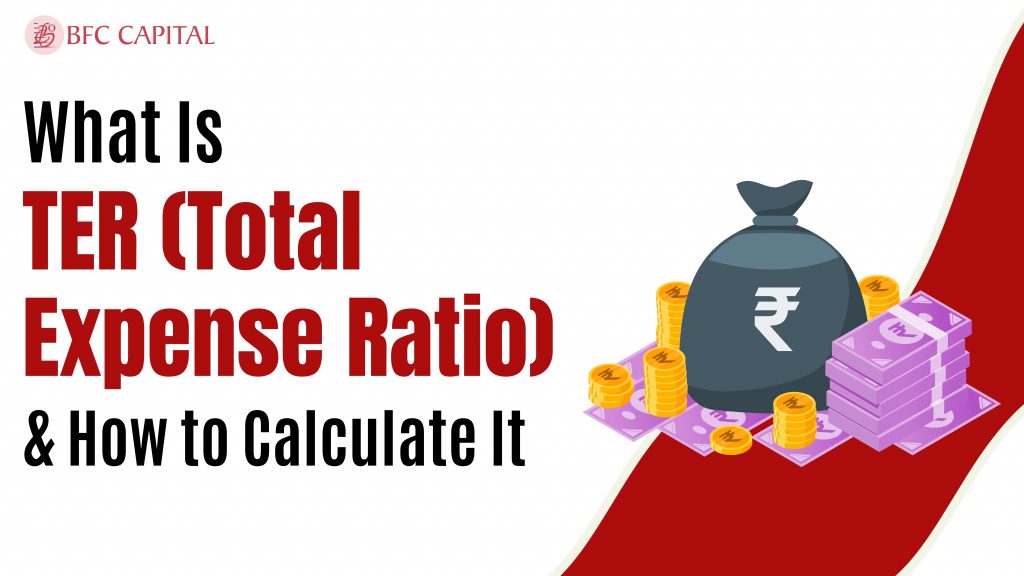
The total expense ratio (TER) determines how much it costs to run a mutual fund or other investment and estimates these costs. These expenses typically comprise management fees and supplemental costs involving trading fees, legal fees, auditor fees, and other operating expenses.
The fund’s total expense ratio (TER) is evaluated by dividing its total costs by its total assets. The TER is also known as the net expense ratio or the expense ratio after reimbursements.
What Is TER (Total Expense Ratio)?
The total Expense Ratio is of overall cost related to operating, maintaining, & supervising a mutual fund, or TER for short. This figure is defined in terms of units. Net Expense Ratio, after-reimbursement charge ratio, is another term used to designate TER. TER is a percentage that is evaluated by dividing a mutual fund’s whole expense by its total assets. The investor is reimbursed for these costs imposed by the fund. Every day, these costs are taken out before figuring out the NAV, or net asset value.
How To TER (Total Expense Ratio)?
- Get the overall assets of the fund, which can be attained from the statement of wealth that mutual funds report to administrators or are passed on to analysts and investors through a prospectus.
- Get the total costs from the prospectus. This can be tricky because the TER includes all the costs to run the fund, such as:
- Trading fees
- Management fees
- Overhead and admin costs (like marketing fees)
Significant costs that Make Up the TER in Mutual Funds
Understanding how mutual funds operate and what is expense ratio in mutual is complex, but to establish transparency, investors will be furnished with thorough information on these costs and how they are broken down. These fees will be disclosed every 6 months in a statement demonstrating the amount that will be deducted from the investor’s account to pay these fees.
- Management Fee: The functioning of a mutual fund is directly associated with its fund manager. Fund manager techniques and decision-making expertise generally define the return and income of a mutual fund. So, The fund company has to pay the manager for their skills and knowledge.
- Administrative Costs: Controlling Mutual Funds comprises different charges such as marketing fees, legal and custodian fees, registration charges, etc, which increase the cost of the fund.
- Distribution Fee: Some investment trusts impose a distribution fee as a brokerage to sell the shares of the investment trust. This extra element is added to the TER of the fund’s regular plan.
- Maintenance Work: Overall costs and other administrative tasks charged to keep things running easily are added to this tab. Continuing precise records for investors, portfolio asset entry/exit fees, consumer support, etc. can be specified as investment trust management costs.
- 12B-1 Charge: This is identical to the amount spent promoting each investment fund. To build enough wealth, it is required to spread information regarding it to the public. The fee for a new investor who is distributing funds in this specific mutual fund is also evaluated following the 12b Fee and is a portion of the fund’s total cost ratio.
- Entry Load: It is a type of fee that an investor pays during the joining of mutual funds, this usually reduces the profit you make from the fund. However, new SEBI rules say that entry fees are no longer included in the TER for mutual funds.
- Exit Load: This fee, which is usually 2-3%, is meant to stop investors from taking their money out of the trust. It applies to the total amount invested and helps keep people from withdrawing their funds from mutual funds.
- Brokerage Fee: Brokerage fees and taxes are charged when settling securities transactions in the system.
- All Other Operating Costs: This comprises Legal and bookkeeping fees, sales, and marketing costs, and other various costs related to system assets, like rent, electricity, and telecommunications. The total expenses ratio also depends on the duration and maturity of a mutual fund.
SEBI’s Maximum TER Limits for Mutual Funds
The Securities and Exchange Board of India (SEBI), under Regulation 52 of SEBI Mutual Fund Regulations, commencement April 1, 2020, has determined particular limitations on the TER that a mutual fund can impose an investor which is:
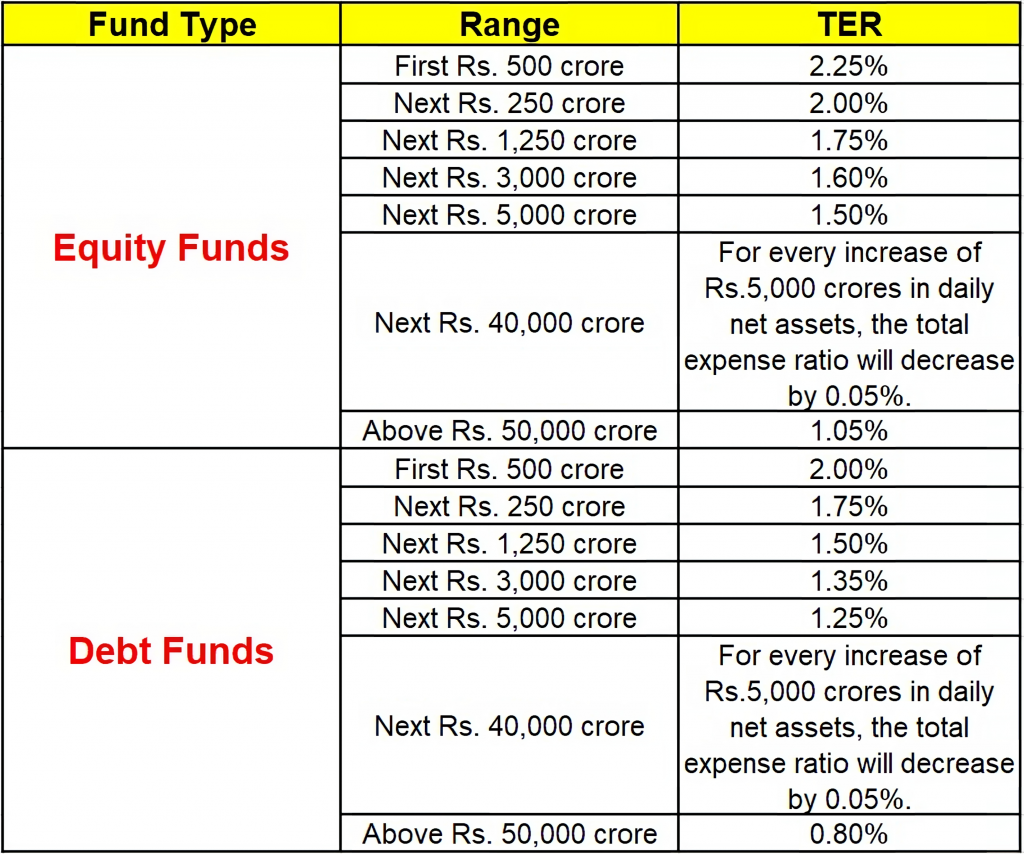
Scheme-related expenses include fees from retail investors outside the Top 30 cities, charged according to Regulation 52(6A)(b). It also includes extra costs allowed under Regulation 52(6A)(c) for various expenses, including those for schemes with an exit load.
Let’s Understand TER by Taking an Example
Suppose you invested in a mutual fund with total assets of Rs. 100 crores. The fund has:
Administrative expenses of Rs.20 lakhs per year
Management fees of Rs.30 lakhs
Other expenses of Rs.20 lakhs
The TER would be calculated as follows:
Total Expenses = Administrative costs + Management fees + Other expenses
= Rs.20,00,000 + Rs.30,00,000 + Rs.20,00,000
= Rs.70,00,000
TER = Total Expenses/ Total Assets = Rs. 70,00,000/ Rs.1,00,00,00,000 = 0.007 or .7% of investment
What is the Influence of TER in Mutual Funds on Returns?
TER can have an influence on your returns as an investor mainly if these these are actively managed funds. The higher TER imposed on the investor signifies lower returns. But this can be further influenced by the funds under administration. Yet, TER has a direct impact on the Net Asset Value (NAV) of the investments. To evaluate mutual fund benefits, it is important to compare various TERs.
Impact of TER on Mutual Fund Returns
TER is a significantly important factor when choosing the right mutual fund. If you have a choice between two mutual funds and if the return possibilities with both funds are similar, even a little difference in the expense ratios can give rise to a big difference in net returns over time.
For instance, suppose you have two mutual funds – Mutual Fund T and Mutual Fund R. If you have invested 2000 in both the funds both funds give a similar return of 12% over 5 years. But the expense ratio of one fund is 0.30% and the other 0.5%.
Assumptions:
Initial Investment: ₹2,000
Annual Return: 12%
Expense Ratios: Mutual Fund T = 0.30%, Mutual Fund R = 0.50%
Investment Period: 5 years
First, calculate the net annual return for each fund by subtracting the expense ratio from the gross return.
Mutual Fund T:
Gross Return: 12%
Expense Ratio: 0.30%
Net Return: 12% – 0.30% = 11.70%
Mutual Fund R:
Gross Return: 12%
Expense Ratio: 0.50%
Net Return: 12% – 0.50% = 11.50%
Now calculate the future value of the investment for each fund using the net return.
Future Value Formula: FV = PV x (1 + r)n
Where:
PV = Present Value (Initial Investment) = ₹2,000
r = Annual Net Return (as a decimal)
n = Number of Years = 5
For Mutual Fund T:
Net Return = 11.70% = 0.117
FVT = 2000 × (1+0.117)5
FVT = 2000 × (1.117)5
FVT = 2000 × 1.747
FVT = ₹3,494
For Mutual Fund R:
Net Return = 11.50% = 0.115
FVR = 2000 × (1+0.115)5
FVR = 2000 × (1.115)5
FVR = 2000 × 1.740
FVR = ₹3,480
Summary of Results:
Mutual Fund T Future Value: ₹3,494
Mutual Fund R Future Value: ₹3,480
Difference in Returns: ₹3,494 – ₹3,480 = ₹14
While the difference of ₹14 might seem small over 5 years, it can become more significant over 15-20 years and with larger investments. Therefore, it’s important to understand and compare TERs when choosing mutual funds.
Final Words
TER in mutual funds or Total Expense Ratio is notable when choosing a mutual fund scheme together with other factors like the funds previous performance and its uniformity in returns. BFC Capitals suggest you to do the thorough research and evaluate the different online and offline option accessible to make investments in a mutual fund.
We will be back with other interesting topics on Investment, Happy Investing!

Assistant Vice President – Research & Analysis
Akash Gupta heads the Research & Analysis department at BFC CAPITAL, where he combines in-depth market insights with strategic analysis. He holds multiple certifications, including:
- NISM-Series-XIII: Common Derivatives Certification
- NISM-Series-VIII: Equity Derivatives Certification
- NISM-Series-XXI-A: Portfolio Management Services Certification
- IRDAI Certification
With his expertise in equity, derivatives, and portfolio management, Akash plays a key role in providing research-backed strategies and actionable insights to help clients navigate the investment landscape.

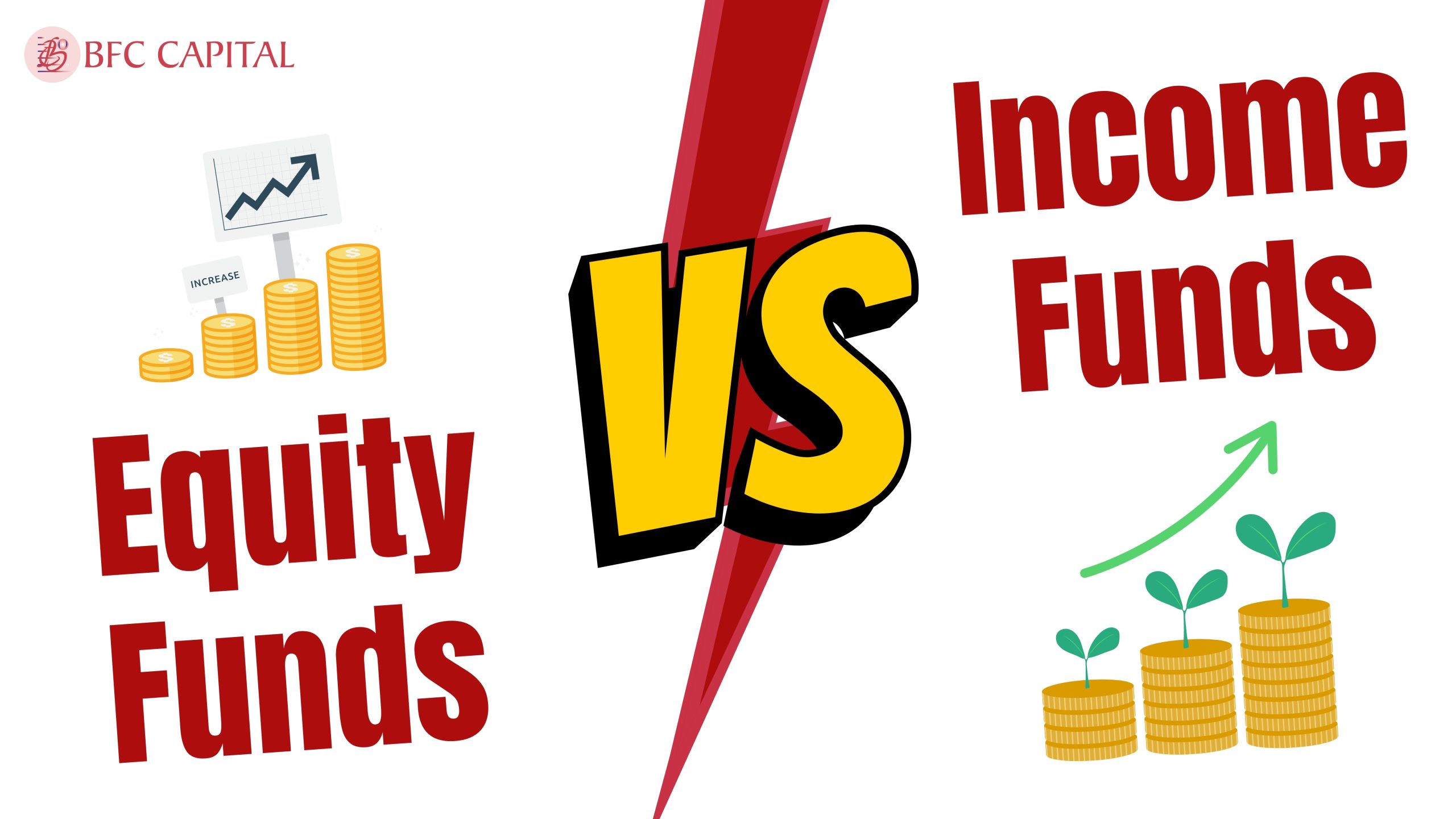
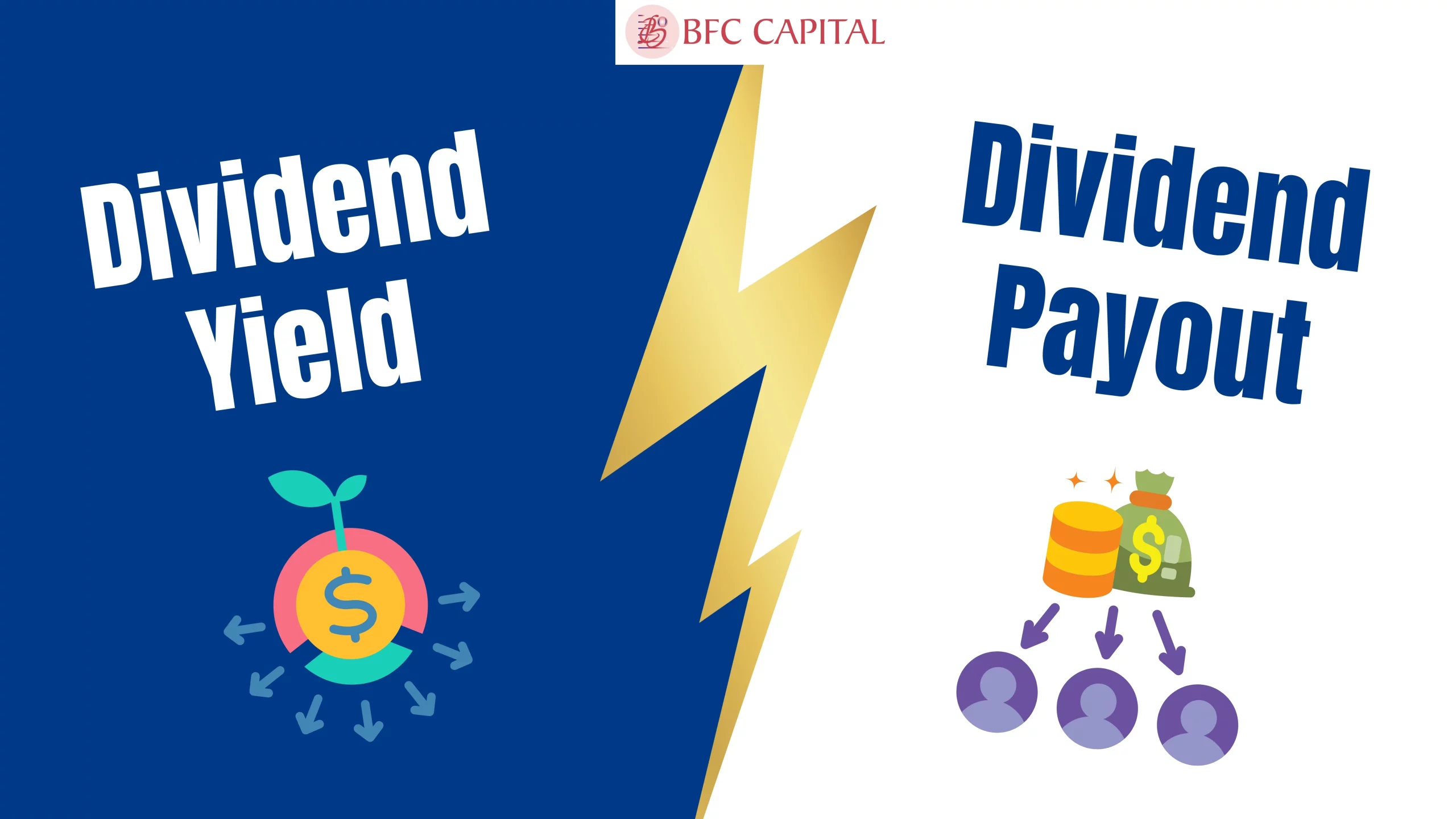

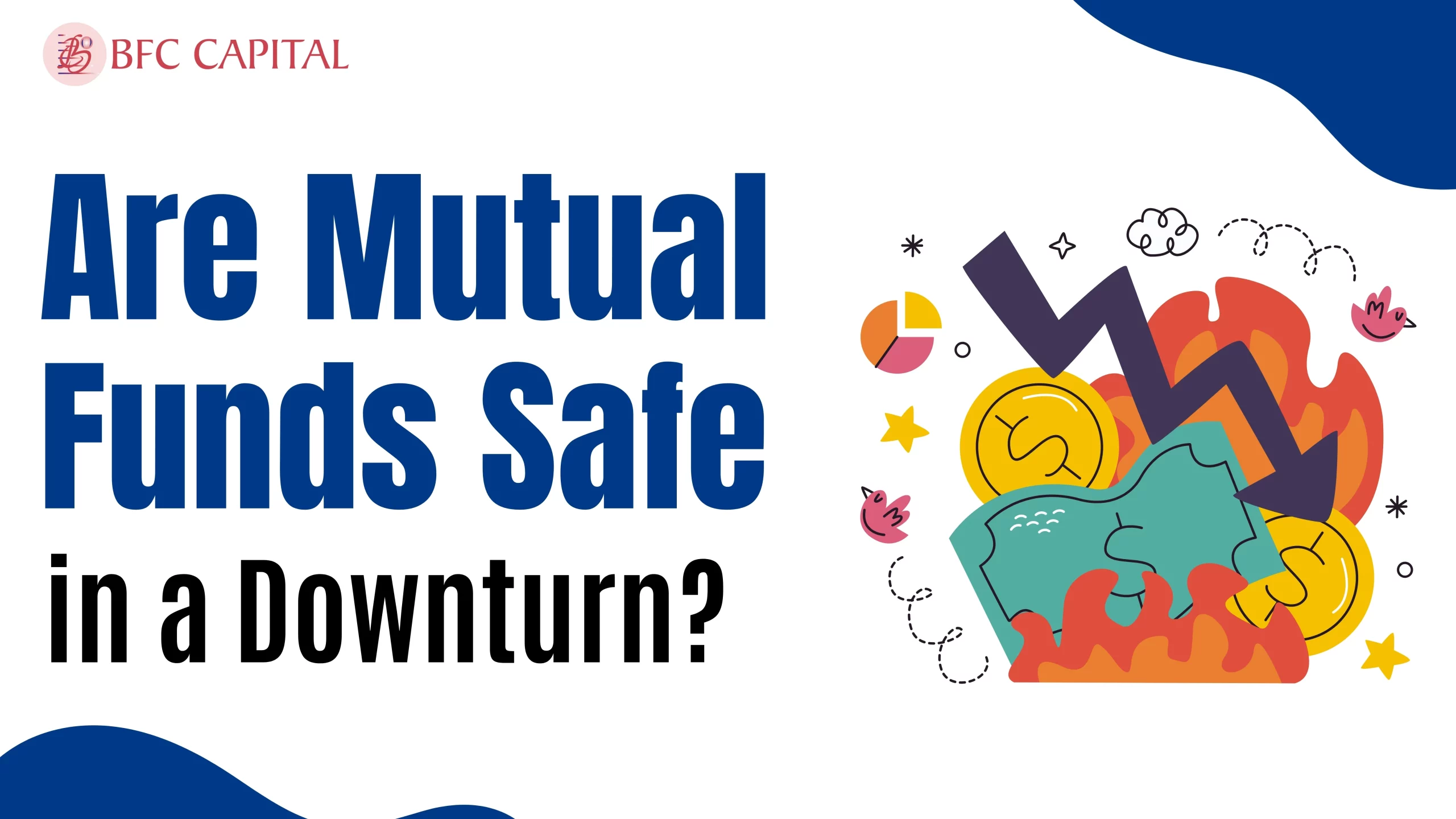




Name: Mutual Fund Returns - What Are Types and Return Rates? - BFC Capital- Blogs : All Financial Solutions for Growing Your Wealth
says:[…] Ratio: The expense ratio in a mutual fund reflects the expenses charged and annual fees. High expense ratios slump the […]